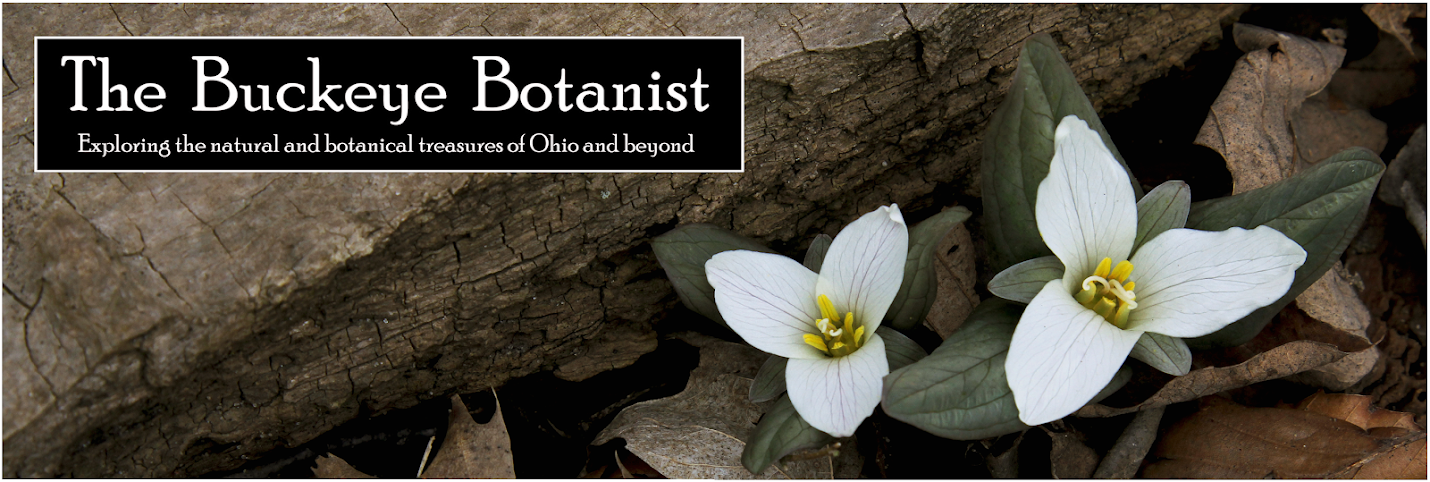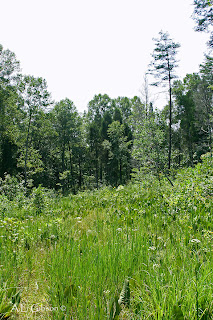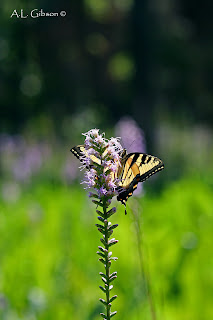A frequently asked question I receive is, "What is your favorite time of year?". A question I can honestly say I have no true answer to. To me every day is my favorite time of year because nature has an interesting way of making all 365 days unique and important, even during winter. However, I could easily make the argument that Fall is extra great even if it only truly lasts a few weeks. As the days become shorter and the sun starts to sink in the sky one of my absolute favorite families,
Orchidaceae, shows off its other Ladies.
The Ladies' Tresses that is. Spring is known for the five native Lady's Slipper orchids, much larger and showier than the Ladies of the Fall. Nine species are native to our state and I was fortunate enough to encounter a few this season while on my many hikes in southeastern and southern Ohio. The genus name for these inconspicuous orchids is
Spiranthes, which is Latin for "spiral flower". Judging from the photographs below I think the earliest Taxonomists captured a pretty accurate name for them. These orchids, unlike almost all the other species, can be pretty difficult to get down to species. A number of things can help make this process considerably easier. Flowering time, size of the inflorescence (which is a fancy botany term for the 'flower(s)' on a plant), structure of the inflorescence, color of the inflorescence's 'throat', habitat and whether or not the plants leaves are visible/present during flowering are all quite diagnostic.
 |
| Spiranthes vernalis |
 |
| Spiranthes vernalis |
 |
| Spiranthes vernalis |
Grass-leaved Ladies' Tresses,
Spiranthes vernalis, is also known as Spring Ladies' Tresses which is quite an inaccurate common name for Ohio since this species blooms in late summer/early fall. This orchid is much more common in its frequency and distribution in the South where it lives up the latter common name and blooms in Spring. Being one of Ohio's tallest
Spiranthes at over two feet and its yellow colored throat/lip help to I.D. this species in the field. This species was found growing in it's usual habitat of an abandoned, dry field and is also found in dry meadows/prairies in either acidic or alkaline soils. Personally, I think the inflorescence of this particular plant were a bit more robust than those of the norm which made for even better detail. While not rare in Ohio, it is relatively uncommon and is mostly restricted to the southern most counties.
 |
| Spiranthes lacera |
 |
| Spiranthes lacera |
After discovering and photographing
S. vernalis, I bumped into its close relative,
Spiranthes lacera blooming all over the place in the same old field. Known as Slender Ladies' Tresses this tiny orchid grows in the same types of habitat as the aforementioned species. This orchid is almost identical to
S. gracilis, a species that shares almost every aspect of
S. lacera. Some people treat them as separate species while others consider the latter as a variation:
Spiranthes lacera var. gracilis. Consulting my copy of
The Monocotyledoneae of Ohio by Lucy Braun (an absolutely fantastic resource I constantly use), who separates them as two individual species, I believe the sample photographed above to be
S. gracilis due to the small difference in the size/shape of the inflorescence and size of the green coloration on the lip or throat which is illustrated in the key. My hesitation lies in the fact that I have an up-to-date and very thorough list of ALL the species of plants found on the Edge of Appalachia preserve and only
S. lacera is listed as occurring on the preserve system which is where this plant was found. Who am I to disagree about the I.D. of a plant that many smarter, better and more accomplished botanists have collected, looked over and identified? Or maybe some botantists are just too picky and this really is just one species. Regardless it is a splendid and beautifully delicate wildflower to be admired.
 |
| Spiranthes ovalis |
 |
| Spiranthes ovalis |
The third and final species of Ladies' Tresses I've encountered this Fall was the potentially state threatened Lesser Ladies' Tresses,
Spiranthes ovalis. Much more rare in Ohio than the previously mentioned two species, this small lady has only ever been collected and found in six southern Ohio counties according to the ODNR. As I mentioned in my previous blog post regarding the Yellowish Gentian,
Gentiana alba, this plant was found growing in the moist, calcareous soil where a seep emerged from the hillside. There are two varieties to be found in the United States for this species. The two are separated by the presence or absence of essential flowering organs but I won't go into the details to save some sanity and explanation. Ohio's typical variety is that of
Spiranthes ovalis var. erostellata, which does not contain the necessary flowering organs and thus is self pollinated while the other variety
S. ovalis var. ovalis is insect pollinated. Unfortunately due to the self pollination of our species it's quantities in the area are limited and usually only a few plants are found. I was able to find just this one and she was just starting to bloom in mid September.



































